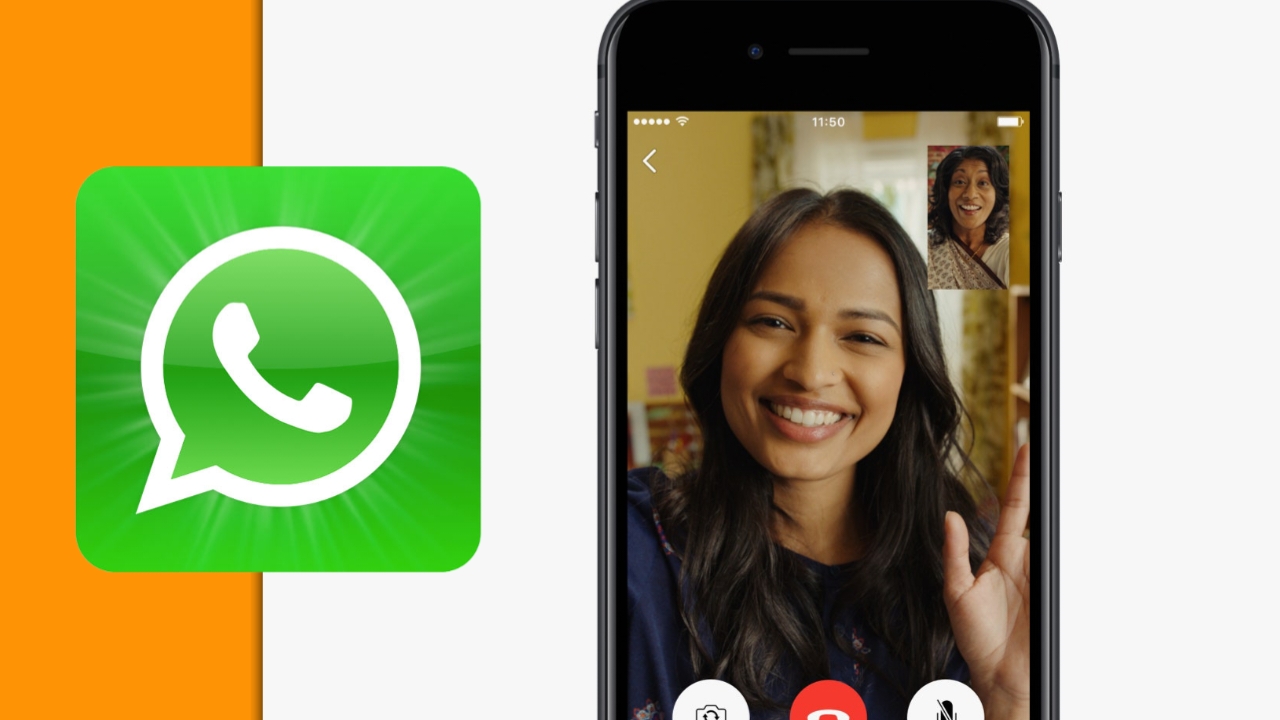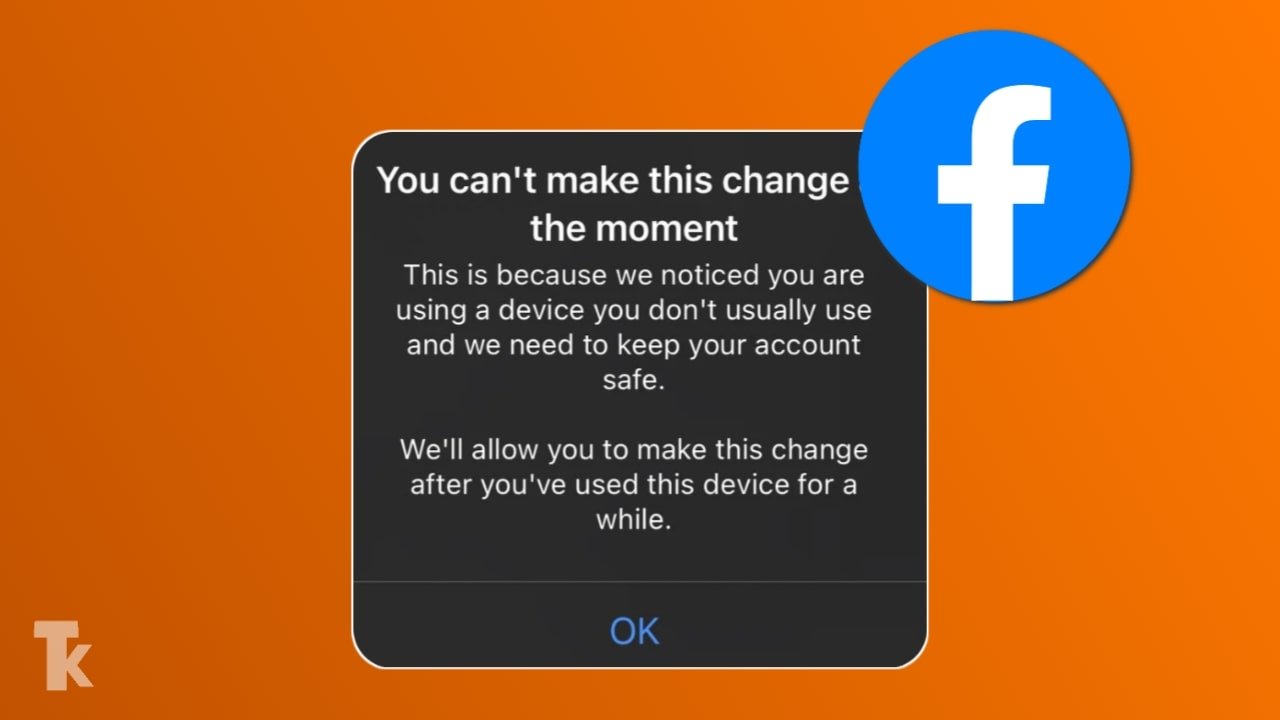Review Summary: The Ray-Ban Meta Smart Glasses are the premier choice for creators in 2025, offering a seamless vertical video aspect ratio for social platforms. With a 12 MP camera delivering high POV video resolution and Multimodal AI features, they replace complex rigs. However, creators must manage the 32GB storage limit and respect the Privacy LED indicators while engaging with Instagram Live comments hands-free.
Surprising fact: Ray-Ban Meta devices start at $299 and can livestream directly to Instagram and Facebook, turning everyday moments into ready-to-post content with a native vertical video aspect ratio.
This shift matters because creators now get a creator-ready camera, reliable audio capture, and hands-free sharing in one wearable. You can capture POV shots, hear live comments, and publish faster without juggling phones or extra rigs.
For creators who value speed and authenticity, that changes the workflow. The new design adds a 12 MP ultra-wide camera delivering crisp POV video resolution, better speakers, a five-microphone array, and water resistance. Battery in the charging case runs up to 36 hours, so your day stays covered.
Across the market, devices range from audio-only frames to headsets that project huge virtual screens. We’ll map which features and capabilities actually lift your content quality, and which specs are just marketing noise.
Key Takeaways
- Ray-Ban Meta targets creators with built-in livestreaming and a ready-to-use camera.
- Look for reliable audio pickup and reduced leakage to keep on-street dialogue clear.
- Battery life and charging case runtime shape how much you can shoot without interruption.
- Compare design and touch controls to see how each pair fits your daily shooting flow.
- Not every device needs a big virtual screen—prioritize features that improve POV, audio, and edit time.
Smart glasses
Today’s connected frames let you record, listen, and respond without digging for a phone.
Entry-level pairs like the Solos AirGo lineup (about $199–$299) focus on convenience. They offer interchangeable frames via Smarthinge, a 10-hour battery, and app features such as Whisper, SolosTranslate, SolosChat, and fitness coaching.
On the trail, the Lucyd Reebok Octane brings an 8-hour battery, water resistance, polarized lenses, and physical controls. Its speakers are solid with modest leakage—good for outdoor shooting and calls.
For audio-only use, Amazon Echo Frames deliver IPX4 open-ear listening and Alexa access without a camera. These are ideal if you want hands-free prompts, notifications, and situational awareness.
- Camera-first picks suit creators who need POV capture and quick uploads.
- Audio-first sunglasses help when you need clear sound and safe ambient view.
- Choose controls and fit by how you work: physical buttons for grit, touch for sleek style.
Tip: prioritize the mix of camera quality, battery, and speakers that match your daily workflow. If the frames don’t fit your style, you won’t use them enough to benefit.
Creator-first buying guide: features that actually impact your content
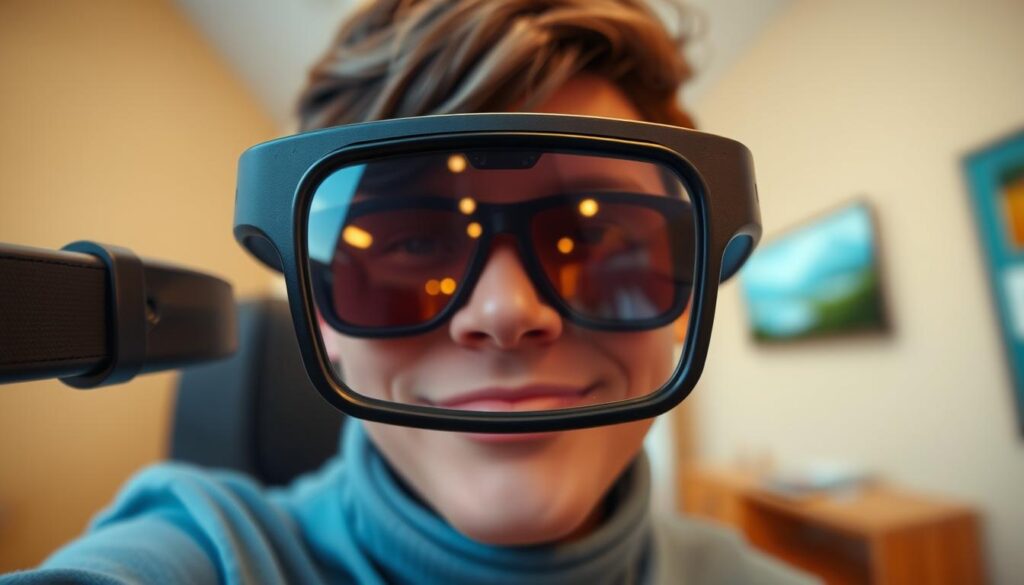
The right features speed your workflow and cut retakes. You want gear that captures steady POV video and clear audio without reaching for your phone.
Camera and video: Prioritize a hands-free camera that records stable 1080p clips. Short, clean videos (60 seconds or less) are easier to edit and post to Reels, Stories, and Shorts. Check how fast recording starts—voice or one-tap triggers save missed moments—and verify the POV video resolution meets your standards.
Audio and microphones: Open-ear speakers help you monitor prompts and calls. A multi-mic array reduces wind and crowd noise so narration stays usable. Test mic pickup in busy streets and venues before you buy.
Battery life and cases: Compare rated hours to real use. A charging case that extends runtime can turn an afternoon shoot into a full day—Ray-Ban offers up to 36 hours with its case, while Solos and Lucyd list 10 and 8 hours respectively.
Comfort, design, and lenses: Fit matters. A frame that slips or pinches ruins long shoots. Look for prescription support and swappable lenses so you can shift between indoor and outdoor views without swapping gear.
| Feature | Why it matters | Quick check | Example |
|---|---|---|---|
| Camera quality | Affects usable clips and photos | 1080p stabilization, clip length | 1080p @ 60s (Ray-Ban) |
| Audio & microphones | Determines publishable narration | Wind handling, mic array | Five-mic array, reduced leakage |
| Battery & case | Extends shoot time without outlets | Rated hours vs real world | 36 hours with charging case |
Ray-Ban Meta smart glasses at a glance: specs, style, and what’s new
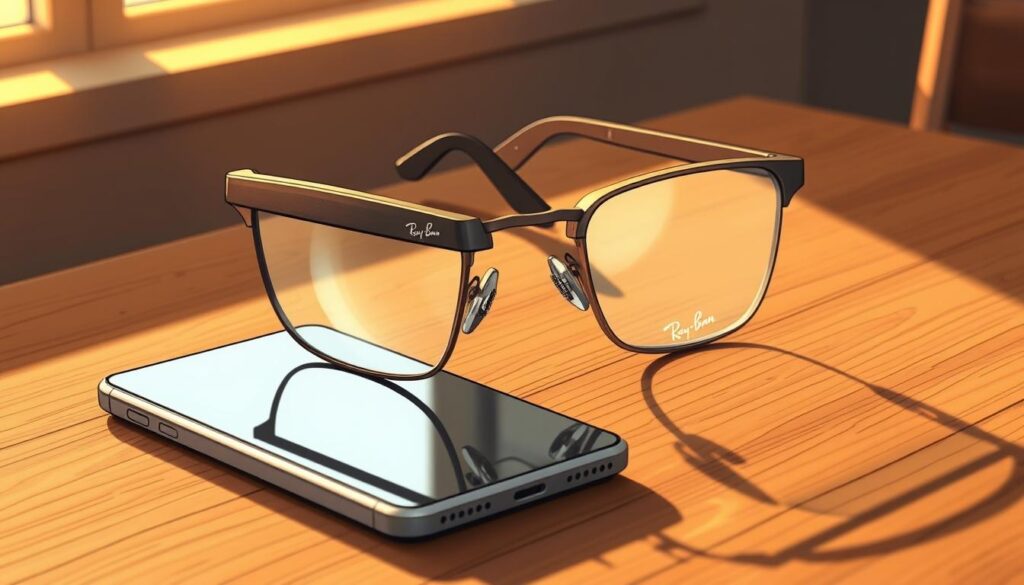
The new Ray‑Ban Meta pair blends point-of-view capture with clearer audio and built-in livestreaming. You get a 12 MP ultra-wide camera that shoots 1080p video up to 60 seconds—ideal for short clips you post fast.
Core media and control
Camera and video: 12 MP photos and stabilized 1080p clips up to 60 seconds. The POV video resolution is optimized for social media, shooting in a vertical video aspect ratio that fills mobile screens perfectly. Use voice commands like “send a photo” to share without stopping your flow.
Audio and interaction
Speakers and microphones: A five-microphone array plus improved speakers reduce leakage and make narration clearer in noisy places.
Performance and livestreaming
The Snapdragon AR1 Gen1 platform speeds processing. Meta AI responds to “Hey Meta” voice prompts, enabling Multimodal AI features that can analyze what you are looking at. You can livestream directly to Facebook and Instagram and hear or view comments in real time.
Design, battery, and price
- Battery life: The charging case extends use up to 36 hours.
- Durability: IPX4 water resistance for rain or sweat.
- Styles: Wayfarer and Headliner frames, transparent color options, prescription-compatible, and 150+ Remix combos.
- Storage: Be mindful of the 32GB storage limit, which holds approximately 500 photos or 100 30-second videos.
- Privacy: A bright Privacy LED signals to others when you are recording.
- Price: Starting at $299 in the United States.
Bottom line: Ray‑Ban Meta blends camera, audio, and livestream tools into a single wear‑able that shortens your path from shot to post. For creators who value speed and view-first capture, it’s a compact, daily solution.
How Ray-Ban Meta compares to other glasses we’ve tested
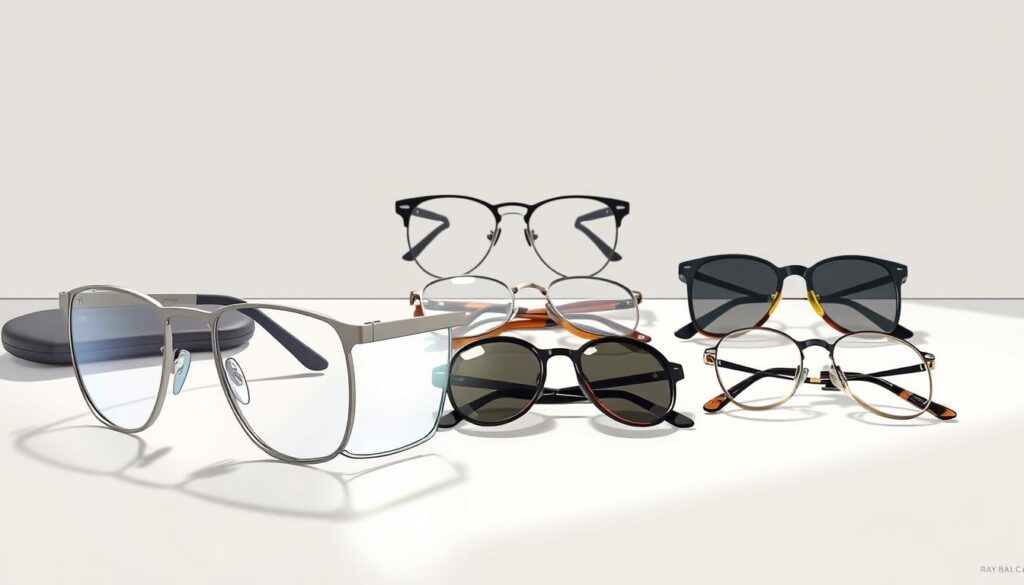
A side-by-side look shows where each pair excels and where it falls short for creators. We highlight camera usefulness, controls, battery, and whether a device helps you share fast.
Solos AirGo Vision (≈$299) adds a camera and ChatGPT assistant but struggles with photo and audio quality. The broader solos AirGo range delivers 10-hour battery life and interchangeable frames. Use Solos if you value style swaps and language tools like Whisper and Translate.
Lucyd Reebok Octane ($199) is built for the trail. It offers an 8-hour battery, solid speakers for music and calls, physical buttons, and water resistance. These sunglasses are a budget pick when battery and simple controls matter more than a creator camera.
Rokid Max 2 ($529) and RayNeo Air 2S ($450) favor a private screen experience. Both project large 1080p/120 Hz screens for video or work, but edge blur and buggy software reduce practical value for capture-first users.
Even Realities G1 ($599) gives a crisp green-text HUD for nav and notifications. With no cameras or speakers, it’s useful for heads-up info—but limited for creators who need POV footage.
Amazon Echo Frames (~$300) deliver Alexa audio only. They excel for prompts and quick replies but not for filming or livestreaming.
| Model | Key strength | Battery | Drawback |
|---|---|---|---|
| Ray‑Ban Meta | Camera-first capture, livestreaming, strong mic array | 36 hrs with case | Higher price vs basic audio frames |
| Solos AirGo Vision | Interchangeable frames, language features | 10 hrs | Poor photo/audio quality, finicky touch |
| Lucyd Reebok Octane | Physical controls, music & calls | 8 hrs | No creator-grade camera |
| Rokid Max 2 / RayNeo | Large private screen for viewing | Varies (multi-hour) | Edge blur, buggy software |
| Even Realities G1 / Echo Frames | HUD/nav or Alexa audio | Multi-hour | No cameras or limited creator tools |
Bottom line: At a competitive price, Ray‑Ban Meta delivers more usable clips and better audio quality than many rivals. If your goal is a single pair that captures, narrates, and goes live, Meta is the most complete option among these devices.
Use cases for creators: where Meta’s capabilities change the game
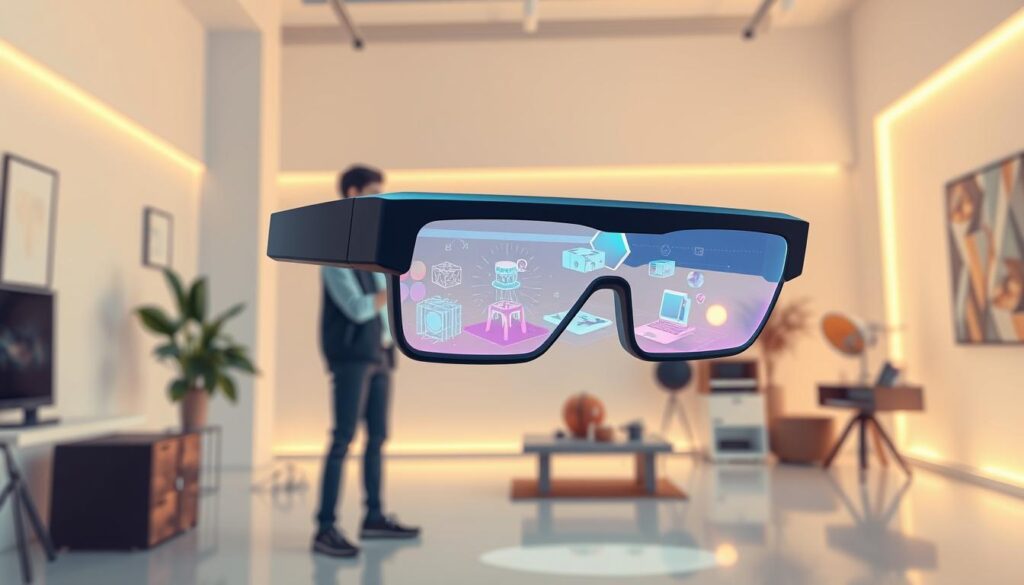
Imagine capturing a tutorial, a reaction, or a quick product demo while both hands stay busy. POV recording keeps your audience aligned with your movement and improves the viewer’s view of action. Short 1080p video clips fit Reels, Stories, and Shorts and reduce edit time.
Hands-free POV filming
Record 60-second clips and 12 MP stills while you demo, cook, or tour. Your phone stays in your pocket, so shots feel natural. Use captured photos and short clips as ready B-roll to stitch into longer content.
Live content and real-time feedback
Stream to Instagram or Facebook and hear or see Instagram Live comments as they arrive. You can react live, answer questions, and keep engagement high without pausing the moment.
On-the-go voice workflows
Say “send a photo” or invoke the Meta AI assistant with “Hey Meta” to draft captions, outline steps, or post instantly. Reliable mics and improved speakers keep narration clear in noisy places.
| Use case | Benefit | Key feature | Result |
|---|---|---|---|
| Quick demos | Hands-free capture | POV 12 MP stills | Faster posting |
| Live Q&A | Real-time engagement | Livestream to IG/FB | Higher watch time |
| Walk-and-talk | Draft captions while moving | Meta AI voice assistant | Less editing |
| B-roll sourcing | Natural moments captured | 60s stabilized clips | Richer stories |
Design, comfort, and lenses: picking a frame you’ll wear every day
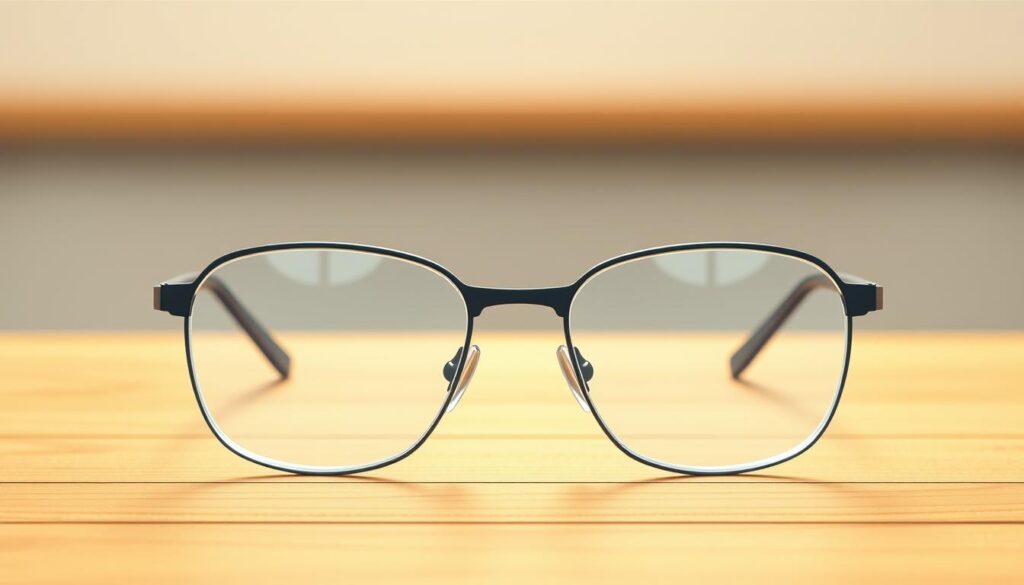
Design choices—silhouette, weight, and controls—decide whether a pair becomes daily gear or a drawer item.
Ray‑Ban offers Wayfarer and Headliner silhouettes in transparent colors like Jeans, Rebel Black, and Caramel. The options feel like regular eyewear, so they sit naturally on camera and in meetings.
Comfort matters more than looks. Lighter weight and an improved touchpad cut fatigue and reduce missed taps. Check the nose bridge and ear temples for pressure spots before you buy.
- Silhouette: Wayfarer for classic lines; Headliner for a subtle retro vibe.
- Fit checks: Balance front-to-back so the frame won’t slip when you look down.
- Prescription support: Ray‑Ban Meta is prescription-compatible—confirm precise measurements and anti-reflective coatings.
Think about lens tint by shooting routine: clear for indoor creators, tempered sun tints for outdoor work that won’t ruin footage. With 150+ Remix combinations you can match color, finish, and lenses to your brand. The right design and comfort make you reach for them every day, turning experiments into steady content flow.
Battery life, audio quality, and durability: creator essentials under pressure
![]()
Nothing kills momentum faster than a drained battery during a perfect take. For creators, runtime, sound, and ruggedness decide whether a device is useful or just another prop.
36 hours with a charging case vs typical single-charge claims
Ray‑Ban Meta offers up to 36 hours with its charging case. That changes how you plan a full-day shoot.
Most competing devices list around 8–10 hours per charge (Lucyd ≈8, Solos ≈10). Pack a charging routine: top up between sets and you avoid emergency reshoots.
Windy streets and noisy venues: speakers, microphones, and leakage
Audio quality is the backbone of watchable clips. Improved speakers help you monitor, while a five-microphone array reduces hiss and leakage.
“Better mics and reduced leakage keep your narration intelligible, even in crowded places.”
Test leakage in quiet cafés and public spaces so your monitoring stays discreet. Balance volume and mic sensitivity to prevent clipping and cut post-production work.
Water resistance and rugged use: IPX4 and field reliability
Durability matters in the real world. IPX4 guards against sweat and light rain during runs, events, or travel shoots.
Compare case portability, too: a slim case fits in small bags and makes you more likely to carry your kit all day.
- Practical tip: schedule charging windows during transit to preserve usable hours.
- Quick check: verify rated battery life against real-world recording time, not standby.
- Field test: try mic pickup on windy streets to confirm intelligibility before important shoots.
| Feature | What to expect | Why it matters |
|---|---|---|
| Charging case runtime | Up to 36 hours (Ray‑Ban Meta) | Full-day shoots without outlet access |
| Single-charge hours | 8–10 hours (Lucyd / Solos) | Plan breaks and top-ups; don’t rely on standby claims |
| Audio system | Improved speakers, five-mic array | Clear narration, reduced leakage, better monitoring |
| Water resistance | IPX4 | Protects against sweat and light rain in real-world use |
For devices that travel with you around the world, the right mix of runtime, audio quality, and ruggedness supports consistent publishing. If you want a closer look at Ray‑Ban Meta and how it stacks up, see our hands-on breakdown at Ray‑Ban Meta smart glasses review.
Price and value in the US: which smart glasses fit your budget and goals
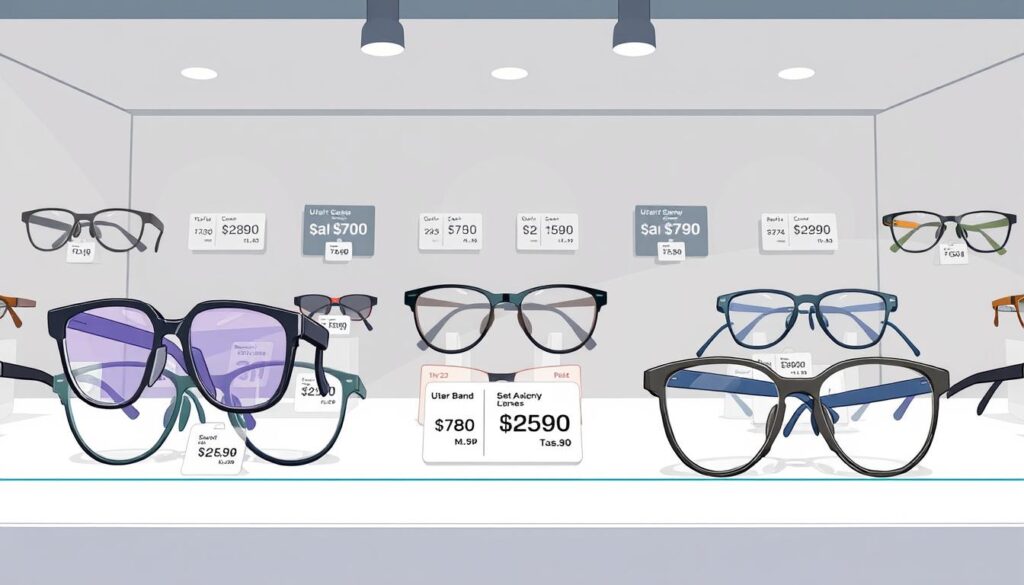
Budget, features, and daily workflow decide which pair really pays off for creators.
Entry level to premium: $199 to $599 and what you actually get
At $199 you get Lucyd Reebok Octane. It covers audio, calls, water resistance, and physical controls. That makes it great for commuting and workouts. It is not built for camera-first creators.
$199–$299 buys Solos AirGo models. You get interchangeable frames and app tools. The Vision camera model sits near $299 but trails Ray‑Ban in capture and mic quality.
$299 starts Ray‑Ban Meta. For that price you gain POV capture, improved mics and speakers, IPX4, and native livestreaming. If you publish clips or go live often, its value is high.
When to pick one over another
- Choose Lucyd if you want durable, budget audio for calls and exercise.
- Choose Solos for style swaps and language features on a tighter budget.
- Choose Ray‑Ban Meta when POV capture, live streaming, and mic quality matter most.
- Consider screen-first devices (RayNeo $450, Rokid $529) only if you need a large private screen for viewing or scripting rather than a camera.
| Price range | Best for | Key trade-off | US example |
|---|---|---|---|
| $199 | Audio & calls | No creator-grade camera | Lucyd Reebok Octane |
| $199–$299 | Style & basic capture | Lower capture/audio quality vs premium | Solos AirGo / Vision |
| $299 | Creator POV & livestream | Balanced price for capture features | Ray‑Ban Meta |
| $450–$599 | Viewing / HUD | Large screen or HUD, but few camera tools | RayNeo / Rokid / Even Realities G1 |
Practical checklist: factor in case, prescription lenses, and accessories. Check phone pairing and app stability before buying. Match the price to the capabilities you will use every week. That is how you get real ROI from these devices.
Conclusion
Gear that fits your routine turns sporadic shots into steady output and real audience growth.
For creators, the winning features are the ones you use every day: fast camera access, reliable speakers and mics, and controls that get out of your way. Ray‑Ban Meta combines a 12 MP camera, stabilized 1080p video up to 60 seconds, native livestreaming to Facebook and Instagram, and a five-mic array for cleaner narration.
If you favor viewing or private screens, pick a screen-first pair; if you want capture, choose a camera-first option like Ray‑Ban Meta or a budget Solos AirGo model to start. Check battery, lens options, and prescription support so the pair becomes part of real life, not another drawer piece.
Choose for quality, comfort, and the features you’ll actually use—and wear your new smart glasses often.
FAQ
What makes Meta’s Ray-Ban Meta glasses worth considering for creators?
The Ray-Ban Meta pair blend a quality 12 MP ultra-wide camera with hands-free capture, 1080p clips up to 60 seconds, and direct livestream support to Facebook and Instagram. That combination lets you film POV content, go live with real-time comments, and use Meta AI voice prompts — all without juggling a phone. The design and prescription options also help you wear them all day.
How long does the battery last in real use?
Expect up to 36 hours when you include the charging case for typical daily workflows like short clips and audio use. Continuous video recording will reduce that runtime significantly; for longer shoots you’ll rely on case swaps or shorter clip lengths to preserve power.
Can I livestream directly from the glasses? How does that work?
Yes. Ray-Ban Meta supports livestreaming to Facebook and Instagram so you can broadcast POV content. You use voice commands or the paired app to start streams, and viewers’ comments can appear in your headset interface while you stay hands-free.
How good is the audio for music and calls?
The glasses use improved open-ear speakers and a five-microphone array for clearer voice pickup and reduced wind noise. Audio quality is optimized for calls and casual music listening, but it won’t replace over-ear headphones for high-fidelity music in noisy environments.
Do these frames support prescription lenses?
Yes. Ray-Ban Meta frames accommodate prescription lenses, so creators who need vision correction can still use the camera and audio features without sacrificing clarity or comfort.
What camera capabilities should creators focus on?
Prioritize sensor quality, stabilization, clip length, and field of view. The 12 MP ultra-wide lens and 1080p capture up to 60 seconds cover most social formats. Stabilization and POV framing matter for wearable capture, so test how footage looks on your platform before relying on it for long-form content.
How does Ray-Ban Meta compare to Solos AirGo or Lucyd models?
Ray-Ban Meta leans camera-first with livestream features and AI voice control. Solos AirGo focuses on interchangeable frames and translation or SolosChat features, while Lucyd and outdoor-focused models prioritize battery life and physical controls for trails and music. Choose based on whether you value capture and sharing (Meta) or longer runtime and dedicated audio features (others).
Is there a virtual screen or HUD option for viewing content?
Ray-Ban Meta emphasizes camera capture and audio rather than a persistent virtual screen. Devices like Rokid Max 2 or RayNeo Air 2S offer stronger virtual screen experiences. If you need a HUD for text and navigation without cameras, Even Realities G1 is an alternative.
Are the glasses water resistant and durable enough for field use?
Yes. The Ray-Ban Meta models carry an IPX4 rating, which handles light rain and splashes. They’re designed for everyday use, but prolonged exposure to heavy rain or rugged impact can still cause damage, so treat them like premium electronics.
What are the key voice controls and AI features available?
You can use “Hey Meta” voice prompts to capture photos, start recordings, request Meta AI assistance, and share content. Voice workflows speed up captioning, quick edits, and on-the-go posting without pausing your activity.
How is privacy handled for photos and video captured on the glasses?
Meta provides settings and permissions through the companion app to manage recordings, sharing, and storage. Always follow local laws and platform rules when recording others, and use built‑in indicators so people nearby know when you’re capturing content.
What price and availability should buyers expect in the United States?
Ray-Ban Meta starts at around $299 in the U.S., with variations for frames and prescription options. Pricing places it in the mid-range category compared with entry-level $199 devices and premium $499+ models, offering a balance of capture features and design.
Are there notable limitations for creators using these glasses?
Limitations include clip length caps (60 seconds for high-res), battery constraints for extended continuous recording, and audio leakage in very quiet settings. Also, the capture-first approach means you won’t get a full AR HUD experience like some virtual-screen competitors.
How comfortable are the Wayfarer and Headliner frames for all-day wear?
Both frames are designed for comfort and balance with electronics built into the arms. Try frames in person if possible — fit, nose pad shape, and weight distribution affect all-day wear. Transparent and remix options let you prioritize style too.
Can creators edit and post content directly from the glasses?
Basic capture and sharing work directly through voice and the companion app. For more advanced edits you’ll still want to use a phone or computer, but quick trims, captions, and direct social uploads are streamlined for fast publishing.
What rescue options exist if battery drains mid-shoot?
Carry the charging case for quick swaps, lower recording resolution, or shorten clip lengths. Turning off always-on features or disabling continuous livestreaming will also extend runtime during long days on location.


